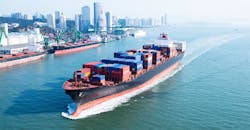First the Trade War, Now Coronavirus: Keeping Your Supply Chain Moving for the Next 90 Days
On the heels of last year’s difficult trade war, supply chains now face an additional disruption caused by the coronavirus. The virus’s impact on international supply chains is spreading beyond China and creating knock-on effects in other parts of the globe. Here’s an update on the situation overseas and what businesses can do now and over the next 90 days to manage the disruption.
Production and Demand Challenges
Plants in the most effected region in China, Hubei Province, will reopen after March 20. Manufacturing plants in other parts of China have reopened and begun to deliver export goods to the ports. However, the virus is spreading quickly across continents and now impacting other Asian manufacturing countries, such as South Korea and Japan. The quarantine in Italy may become a new challenge, especially for companies in the automotive and industrial sectors who may source components from there.
Logistics Impacts – Current Situation
Ocean carriers have cancelled a record number of vessel sailings in response to the drop-off in cargo. When coupled with vessels out of service for retrofitting, the inactive fleet has reached a massive 2.04M TEU. Despite these capacity cuts, ships are not full, and space is available to book—if your carrier has a sailing.
The cancelled sailings created a large backlog of empty containers at the ports of Los Angeles/Long Beach waiting for vessels to evacuate them. At the same time, reduced U.S. imports mean there are not enough containers in the Midwest to handle export bookings. Ocean carriers are pushing for export rate increases to compensate for repositioning costs.
Passenger air service to and from China has been sharply curtailed, with airlines in every global region suspending or reducing flight frequency to China and now Asian and Italian points. Within Asia, Japan has imposed a 14-day quarantine on travelers arriving from Hong Kong, China and South Korea, causing Intra Asia flight cancellations. Cargo capacity remains tight because passenger flight cuts eliminate the availability of cargo space in the belly of planes. As factories reopen and importers urgently need replenishment, air cargo rates from Asia to all regions have spiked.
Actions to Take Now
Prioritize your cargo by product, supplier and customer, developing a separate strategy for critical items and for handling the return of normal volumes of cargo.
For Urgent Orders
If air freight is appropriate for the most urgent orders, explore using secondary airports and indirect routings to gain access to space. Small, frequent shipments will be easier to move than larger lots.
For a faster ocean transit time to the interior of the U.S., terminate ocean shipments on the West Coast and have your freight transloaded from containers into trailers there.
If your company also sells Asian manufactured goods in Europe, consider switching that cargo from ocean to rail. This can cut transit time by as much as ten days, while also avoiding any cross-province trucking delays.
Moving Finished Goods
Once the cargo supply returns to normal, accumulated demand may cause ocean import rates to spike right before the start of the traditional Trans-Pacific rate negotiation season. To have your company’s ocean cargo move at 2019/2020 rate levels, request a one-month extension on the current ocean contracts. Or, ask your freight forwarder to add your company on to the forwarder’s current season NAC (Named Account) contracts.
If space becomes a premium, an internet-based freight marketplace can provide guaranteed space, albeit at spot market pricing. Explore some of these new applications now in order to have a contingency plan in place. NYSHEX provides access to confirmed space on variety of ocean carriers. Another option is Twill, Maersk Line’s in-house application.
Exporters battling equipment shortages should consider sending their goods by truck to a port for transloading into empty containers.
Planning for Next Year’s Contracts
Carriers are projecting large rate increases for the 2020/2021 season. Begin carrier discussions now (while also requesting extensions of any current ocean contracts). The rate situation will be clearer once the market returns to normal. The more information you gather from carriers and the marketplace, the better your company’s negotiating position.
Prioritize service expectations and include performance requirements in your agreements. To minimize future disruptions caused by blanked sailings, have a multicarrier plan across different carrier alliances. Review the finances of all prospective vendors – last year saw a spate of trucking bankruptcies and carrier consolidations. The value of dependability will help offset the cost of rate increases.
As this is an extremely fluid situation with impacted areas changing day by day, business leaders should closely monitor the situation and adapt to new developments. By employing a broad range of logistics tactics, your company can successfully navigate this difficult and unpredictable situation.
Lauren Pittelli is the founder and Principal of Baker Logistics Consulting Services, Inc., a consulting firm focused on addressing transportation, trade and customs consulting needs. Prior to starting Baker, she spent 30 years in senior leadership roles in the freight forwarding and customs brokerage industry, providing transportation, customs and contract logistics services to shippers. A graduate of Harvard College, she is also a licensed U.S. Customs House Broker.
